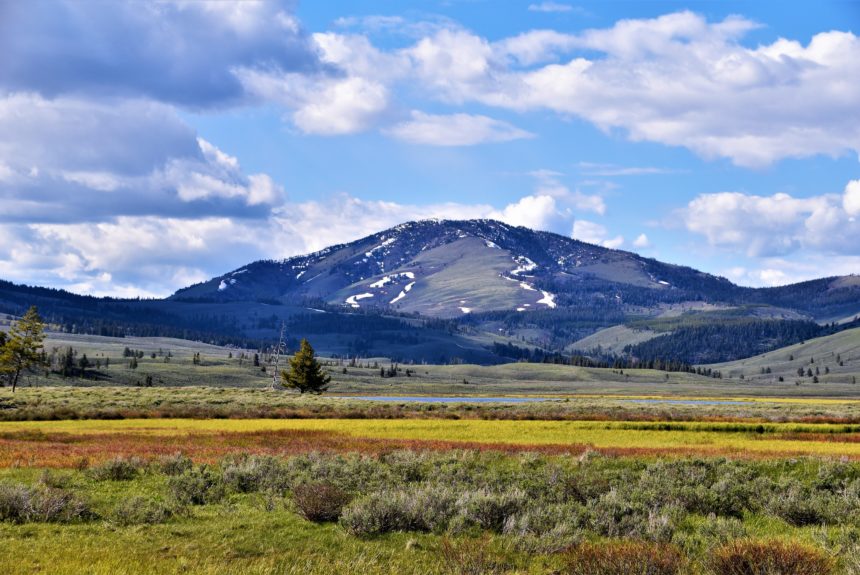By Nick Loris
More than a century has passed since Katharine Lee Bates wrote the lyrics to “America the Beautiful” from Pikes Peak in Colorado. Recalling what triggered Bates to write the poem, she remarked, “We hired a prairie wagon. Near the top we had to leave the wagon and go the rest of the way on mules. I was very tired. But when I saw the view, I felt great joy. All the wonder of America seemed displayed there, with the sea-like expanse.”
Millions of Americans feel that same joy every day when they hike, fish, hunt, ski, farm or simply marvel at our nation’s landscape. So when the Biden administration released its report, “Conserving and Restoring America the Beautiful,” it was met with both excitement and apprehension. Excitement to protect the land, water and wildlife for current and future generations. Apprehension that a top-down, government-centric approach would trample the rights and conservation efforts of private property owners and public land users.
The plan itself proposes to conserve 30 percent of America’s lands and waters by 2030. The administration notes that only 12 percent of land is under federal protection, but that number changes quite a bit when considering state, local and private conservation.
For people reflexively concerned about the federal government accruing more property, 30 by 30 screams of a federal lands grab. However, the 24-page document released by the Department of Interior earlier this month outlines eight principles, many of which are consistent with conservative environmental stewardship. They include:
- Pursue a collaborative and inclusive approach to conservation.
- Conserve America’s lands and waters for the benefit of all people.
- Support locally led and locally designed conservation efforts.
- Honor tribal sovereignty and support the priorities of tribal nations.
- Pursue conservation and restoration approaches that create jobs and support healthy communities.
- Honor private property rights and support the voluntary stewardship efforts of private landowners and fishers.
- Use science as a guide.
- Build on existing tools and strategies with an emphasis on flexibility and adaptive approaches.
At first glance, there’s a lot of language to like in these principles. Clearly defined and protected private property rights empower and incentivize people to increase the present and future value of the resources they own. Listening to the concerns and suggestions of property owners, county commissioners, tribal leaders and land users on state and federal lands will better inform conservation efforts. Objective, transparent science should in fact be a guiding tool to inform policymakers and decision makers.
Furthermore, because America’s land and water resources are unique and present different challenges and opportunities, flexible conservation efforts are more pragmatic and effective than one-size-fits-all approaches. Such an approach should understand that the country’s land, wildlife and biodiversity cannot be locked up and put behind glass as if it were a museum. Collaboration that respects property owners, land users and communities will allow for more adaptability where stakeholders can adjust to new information. On the contrary, overly rigid plans can trap resources in unsuccessful conservation plans, resulting in worse economic and environmental outcomes.
Even before the administration outlined its 30 by 30 principles, however, the administration’s approach to federal lands got off to a discouraging start by prohibiting new oil and gas leases on federal lands and waters. The Federal Land Policy and Management Act requires multiple uses on federal lands, such as natural resource extraction, renewable energy development, recreation and grazing. Thus far, the Biden administration has ignored that statute. Doing so ignores a key multiple-use stakeholder, which will likely backfire environmentally if future oil and gas development shifts to countries with less stringent environmental and public health standards. If the Biden administration wants to keep working lands working, they can’t pick and choose who can and cannot work.
More detail is necessary to evaluate how successful the Biden’s conservation plan will be and how true it will stick to the principles. However, as the report rightfully acknowledges, “Decades of land and water stewardship by ranchers, farmers, fishers, hunters, private property owners, conservation organizations, Tribal Nations, territories, State and local governments, and others have demonstrated that the most effective and enduring conservation strategies are those that reflect the priorities, needs, and perspectives of the families and communities that know, live, work, and care for the lands and waters.”
That encouraging language provides an important benchmark by which to judge implementation. Understanding what works is the first step. Identifying opportunities to empower the people who best understand the importance of productive land use, conservation and environmental stewardship will go a long way to meet the administration’s environmental objectives.
The views and opinions expressed are those of the author’s and do not necessarily reflect the official policy or position of C3.
